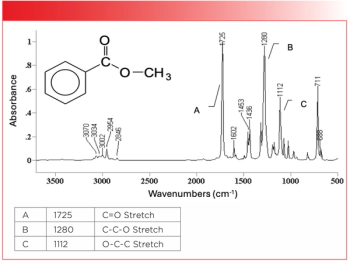Key Points
- The study used HSI combined with data fusion and machine learning (ML) to non-destructively assess walnut quality across different storage durations.
- Mid-level fusion (MLF) with a random forest model best predicted fat content, while low-level fusion (LLF) with a PSO-SVR model yielded the highest accuracy for acid value prediction.
- Despite current cost and environmental limitations, the study offers a promising framework for real-time, non-invasive walnut quality assessment, paving the way for improved freshness tracking and food safety in the nut industry.
Recently, a team of researchers from Hebei University and Hebei University of Engineering investigated a new way to evaluate walnut quality non-destructively across various storage durations. This study, which was published in the journal Spectrochimica Acta Part A: Molecular and Biomolecular Spectroscopy, demonstrated how hyperspectral imaging (HSI) technologies combined with advanced data fusion and machine learning (ML) models can assess walnut quality across various storage durations (1). Led by Xin Zhao and Shimin Chang, the study highlights the use of visible near-infrared (VNIR) and near-infrared (NIR) hyperspectral systems to predict two critical quality indicators, fat content and acid value, and accurately classify walnuts stored for different periods (1).
Walnuts deteriorate over time because of various reasons. Some of these reasons include rancidity, insect injury, and general decay (2). Oxidation and moisture changes also impact the nutritional and commercial value of walnuts (1). As a result, quality inspection methods are important in ensuring that quality walnuts enter the market. The current issue, though, is that the typical inspection methods are destructive, time-consuming, or unable to offer real-time analysis, prompting the need for more innovative, efficient technologies (1). Because HSI can capture both spatial and spectral information, it has emerged as a promising solution.
What did the researchers investigate?
In this study, the research team investigated how low-level fusion (LLF) and mid-level fusion (MLF) strategies could offer more accurate and holistic walnut assessments. As part of the experimental procedure, the researchers developed several predictive models using different ML techniques, including partial least squares regression (PLSR), particle swarm optimization-support vector regression (PSO-SVR), and random forest (RF) (1). The models were evaluated based on metrics such as the coefficient of determination in prediction (R²P), root mean square error of prediction (RMSEP), and residual predictive deviation (RPD) (1).
Overall, the researchers found that when paired with the RF model and UVE, the MLF strategy was the best at predicting fat content. This strategy achieved an R²P of 0.8706, RMSEP of 0.0083, and RPD of 2.7797 (1). For acid value predictions, the LLF strategy using the PSO-SVR model and UVE-CARS yielded an even higher performance with an R²P of 0.9694, RMSEP of 0.0369, and RPD of 5.7202 (1). Notably, both fusion strategies significantly outperformed models using VNIR or NIR data alone.
Beyond quantitative prediction, the researchers also developed classification models to distinguish walnuts by storage durations of 6, 12, and 18 months. Using PSO-SVM and RF classifiers on SG-2nd derivative preprocessed data, the models achieved 100% accuracy in distinguishing walnuts stored for 6 and 18 months (1).
What do these results mean?
The results achieved by this study indicate how HSI when paired with data fusion and ML can serve as a nondestructive approach in evaluating the quality of walnuts over specific storage periods. The method not only provides real-time insights into the fat and acid composition of walnuts, but it also has the capacity to visually map these properties across the kernel surface, offering a comprehensive quality profile (1).
The current issue, though, is that wide adoption of this method remains unlikely. As of now, HSI equipment is expensive, and the spectral data is sensitive to environmental variables like lighting. To address these concerns, the researchers suggest developing cost-effective imaging systems and controlled acquisition environments, such as dark boxes, to reduce noise and standardize data capture (1).
By integrating cutting-edge spectroscopy, ML, and data fusion, this study provides a technical blueprint for future advancements in food quality assessment, demonstrating that HSI could soon play a central role in ensuring the freshness, nutritional value, and shelf-life classification of one of the world’s most valued tree nuts (1).
References
- Zhao, Z.; Qiu, J.; Liu, X.; et al. Combining VNIR and NIR Hyperspectral Imaging Techniques with a Data Fusion Strategy for the Determination of Fat Content, Acid Value, and Storage Time of Walnuts. Spectrochimica Acta Part A: Mol. Biomol. Spectrosc. 2025, 343, 126355. DOI: 10.1016/j.saa.2025.126355
- U.S. Department of Agriculture, Shelled Walnuts Grades and Standards. USDA.gov. Available at: https://www.ams.usda.gov/grades-standards/shelled-walnuts-grades-and-standards (accessed 2025-06-11).






